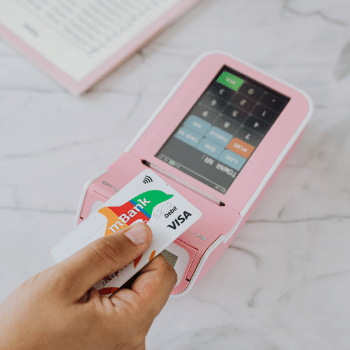What is NFC and what precautions should you take with this technology?
 You've certainly heard — or read somewhere — about NFC technology, but not everyone knows exactly what it is or how it works. First of all, this may come as a surprise to many: although it has only become popular in Brazil in recent years, the NFC standard (an acronym for Near-Field Communications) is not something new. It was invented in 2002 based on technical designs by Philips and Sony.
You've certainly heard — or read somewhere — about NFC technology, but not everyone knows exactly what it is or how it works. First of all, this may come as a surprise to many: although it has only become popular in Brazil in recent years, the NFC standard (an acronym for Near-Field Communications) is not something new. It was invented in 2002 based on technical designs by Philips and Sony.
The idea was simple: To create a technology that would allow two devices to exchange information without the aid of wires by entering a low-amplitude electromagnetic field — in terms of unit of length, we are talking about a distance of no more than 4 inches (10 cm), but it is generally much shorter, between one and half an inch (2 to 3 cm). NFC applications are varied, and with the help of the Japanese company Sony, they became an instant hit in Asia.
The coolest thing about this technology, similar to the older RFID (Radio-Frequency Identification), is that NFC does not require the chip carrier to have its own power supply, which allows it to be embedded into cards, tags, and even stickers. In the so-called passive reading, the reading device (which can be a smartphone or a dedicated receiver) energizes the chip when it is within range, reading, writing, or modifying the information recorded on it.
Today, NFC has taken over the world — and chances are it's part of your life even if you don't realize it. Here in Brazil, its “silent inauguration” took place with São Paulo’s Bilhete Único (Single Ticket) public transportation cards. The ticket contains a standard Mifare NFC chip and, thanks to it, credits can be added through a smartphone that has a built-in reader. More recently, credit cards have also embraced such a standard to allow contactless payments.
If it comes near, you pay... or you lose
And that's where things get complicated. Contactless payments became absurdly popular during the most critical periods of the new coronavirus (SARS-CoV2) crisis, as it was much safer to just bring your credit card closer to the machine than to allow the seller to hold it with their hands. Brazilians quickly got used to such a facility, but what few people know is that just as NFC can be handy, it also poses risks to your security.
It is not difficult for a cyber criminal to steal money from your account using a device built for this purpose. You just need to be in a crowded place, and the criminal then comes closer, leans the malicious reader against your pocket, and “requests” the card chip to send money, like a conventional vending machine. That is why security experts recommend that you disable contactless payments if you intend to attend crowded places, such as a party, for example.
And the scams don't stop there. Due to the speed and apparent practicality of contactless payments, when making a purchase people do not check whether the amount being charged at the machine is correct. There have been many complaints from delivery app customers who have been scammed by malicious people — including those who intentionally break the machine's display so that, instead of US$ 20, US$ 200 is charged from the inattentive customer.
It's good to keep an eye out
As we said, although extremely popular in Asia, NFC technology is still new in Brazil and it is natural that citizens are still not used to taking certain precautions. If you opt for contactless payments, always check the amount being charged at the counter before skimming your card — never accept making transfers on devices that are “broken” or whose display is difficult to read. Always ask for your receipt to check the amount charged.
Regarding the “stealing machines”, the recommendation is to simply disable contactless payments if you know you will be going to crowded places. You can do this through your bank's app. If this constant enabling and disabling seems too bothersome, then it is worth investing in an NFC anti-theft wallet: They are made with a special aluminum coating, which prevents communication between the chip and the readers. These wallets are easily found at online stores and at affordable prices.
Finally, you should also be careful with phones equipped with an NFC antenna. Keep the function disabled until you need to use it, as it may unintentionally read a tag that may download malware onto your mobile device. This is a perfectly possible and frightening scenario since, as mentioned above, chips can be embedded into anything — a key ring, a sticker, or even the ring of someone who asks you to borrow your smartphone for a few seconds.
